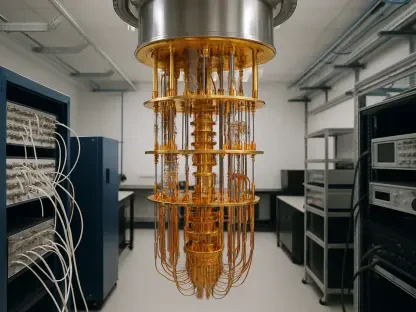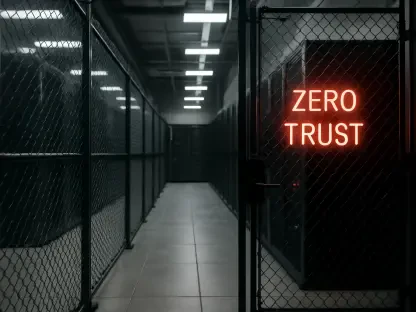The ambitious AI Action Plan announced by the Trump administration proposes a significant expansion of data center infrastructure as a means to entrench AI dominance globally. This bold strategy has ignited debate over whether the push for AI supremacy can ethically and effectively justify a rollback of environmental policies. The plan contends that modifying environmental regulations, such as those under the National Environmental Policy Act (NEPA), is essential to propel the growth of necessary infrastructure. In establishing the National Energy Dominance Council, the administration emphasizes the need to reform existing frameworks, positioning this as a cornerstone of national strategic growth. Public discourse surrounding these changes reflects concerns from environmentalists and consumer advocates who question the wisdom of sacrificing long-standing environmental protections in pursuit of economic and technological advances.
Infrastructure Expansion and Environmental Implications
The heart of the Trump administration’s proposal is the establishment of new data centers that require extensive energy resources. The plan seeks to leverage federal lands as potential sites for data center construction, advocating for exclusions under NEPA to expedite infrastructural development. It also proposes altering permits, such as the nationwide Clean Water Act permit, to bypass Pre-Construction Notifications for activities aligned with AI data centers. Such actions are designed to streamline construction processes while ostensibly safeguarding economic growth. However, critics contend these developments may precipitate significant environmental degradation, threatening air and water quality. They highlight potential risks from unchecked industrial expansion as large-scale data centers deplete local resources, notably water, needed for cooling technology. This water is often returned further contaminated, posing financial and health burdens on communities that may face unexpected expenses from energy-intensive facilities.
Tension Between Innovation and Stewardship
Senator Ed Markey and other environmental advocates have publicly decried the plan as exploiting gaps in federal environmental legislation, enabling accelerated growth without prudence. They argue that unchecked expansion could result in substantial harm to air and water quality, compromising community welfare. The Clean Air Act and Clean Water Act established in the 1970s remain vital safeguards, which many feel should not be disregarded for technological gains. These acts offer critical protections against industrial excesses, ensuring public health remains a priority. Highlighting these concerns, figures from Consumer Reports emphasize the necessity to balance innovation with environmental stewardship. They urge that modern progress should not come at the cost of foundational environmental protections, underscoring the potential long-term implications for both community and national welfare.
Grid Expansion and Accountability
In response to criticism, advocates of the AI Action Plan cite potential infrastructure and economic benefits. Josh T. Smith from the Abundance Institute argues that while short-term tradeoffs exist, establishing increased accountability measures within the plan can mitigate long-term impacts. Crucially, the plan incorporates enhancements to the U.S. electric grid, described as vital to national security and economic health. Such upgrades aim to stabilize and optimize resources, prioritizing connections to resilient energy sources. These measures outline a path for navigating the current energy landscape, potentially offering more adaptive solutions, including increased reliance on off-grid data centers. Although the specific details remain sparse, Smith sees the plan as facilitating resource efficiency and flexibility in energy management, aligning with broader administrative objectives.
Financial Implications and Public Concerns
Criticism extends beyond environmental ramifications, with financial implications taking center stage in the debate. Tyson Slocum from Public Citizen highlights concerns over leading AI developers potentially transferring costs to consumers. This raises questions about who should bear the financial burden associated with rapid expansion. He contends that private equity-backed data centers have sufficient resources to manage infrastructure costs instead of passing them on through increased utility bills. Additionally, there is the argument that the AI plan contradicts President Trump’s previous promises about reducing utility costs, with possible outcomes being increased expenses due to higher reliance on natural gas. This dimension of the debate foregrounds the importance of considering an equitable distribution of financial obligations.
Balancing Development and Sustainability
The Trump administration’s proposal centers on creating new data centers that require substantial energy resources. It aims to use federal lands as sites for these centers, pushing for exclusions under NEPA to fast-track development. The plan suggests modifying permits, like the Clean Water Act permit, to avoid Pre-Construction Notifications for AI data centers. These measures intend to speed up construction while supposedly fostering economic growth. Critics, however, warn of significant environmental harm, pointing to risks of industrial overexpansion. Large data centers often drain local resources, especially water required for cooling. Post-use, this water is typically returned contaminated, which threatens air and water quality. This contamination can lead to unforeseen financial and health burdens on communities, as they might face expenses from these energy-intensive facilities. Opponents emphasize the need for balancing economic ambitions with environmental stewardship to prevent these adverse impacts.









